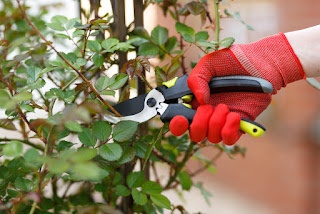Gardening with Family & Friends
While I’ve never taken a formal gardening class, save from one flower-arranging session, I’ve found the best lessons learned about how to get plants to grow, flowers to bloom, and weeds to not overrun came from friends and family, as generous with their wisdom as they were their cuttings.
From Betty, I learned to divide and conquer.
When we lived in Decatur, Alabama, Betty became my friend, my mentor, and Mimi to my boys. A graceful, generous soul, she shared her knack for southern hospitality and love of gardening. She taught me that hardy perennials like monkey grass and mint could be divided and shared with a swift whack of a shovel embedded in their spidery roots. I can still hear her southern drawl telling me "you cain't kill it" whenever I hesitated to thin out my plants.
From Kim, I learned to thin from within.
When we moved from Alabama to College Station, Texas, I met an amazing woman and her two sons at Chick-fil-A. Upon visiting her home, Kim gave me a quick lesson on pruning. She reached into a shrub and clipped the branches growing inward to allow sunlight to reach the plant and to give the bush a more lacy appearance. The result was immediate. To this day, I can be found with my pruning shears, trimming branches from within my plants to make them appear less dense and more natural looking.
From Martha, I learned to move it.
I met Martha on a trip we took with my husband's coworkers. An avid gardener, Martha gave me sage advice: If something you planted isn't growing, move it to a different spot in your yard. I had a Texas mountain laurel that seemed to squat and pout in the first bed I planted it in. So the next spring, I dug it up and placed it on the opposite side of the lawn, in a sloped bed where it thrived. Perhaps it was the well-drained soil or the filtered light it preferred, but whatever the condition, my mountain laurel loved its new home and flourished.
From my grandfather, I learned to gather.
When my cousin and I were nine and ten, we went on a fishing trip with our grandparents to Wisconsin. On the drive home, we noticed wild ferns growing in the ditch by the road. I'm not sure how much urging it took, but Grandpa pulled over and we gathered a couple clumps of ferns, wrapped the roots in newspaper, and placed them along the floorboard of the backseat. When we got home, Mom planted the ferns in the backyard shade near the house and, to this day, they come back each year. Since then, I've gathered seed pods from my travels and even plucked roadside wildflowers—roots and all—to place in my garden. Along the way, I've learned a few lessons about what will survive and what's best left behind. (A certain variety of Queen Anne's Lace nearly took over the lawn.) I still keep one eye trained on the roadside when I drive, in search of a native wildflower or plant that might work in my garden.
From my grandmother, I learned to deadhead.
As kids, my cousin and I would deadhead black-eyed Susans and zinnias in my grandparents' flowerbeds, waiting until the blooms had dried and the seed-heads crumbled between our fingers; seeds would rain down into the soil, guaranteeing more flowers next season. Now I rarely wait for my blooms to dry, instead clipping the flowers to bring indoors where I can enjoy them, and then saving some to dry on the counter so I can harvest the seeds.
From my mom, I learned to weed.
I despised weeding the garden as a kid, especially our vegetable patch that seemed overrun with grass, but any good gardener knows you have to tackle the weeds to save the plants. I still don't enjoy weeding, but I don’t mind it nearly as much. The time spent weeding the beds gets me outdoors and my hands good and dirty.
My hope is my kids will share my passion for plantings and that the lessons so freely given to me will be passed down to them from their own mom, who always loved playing in the dirt.





